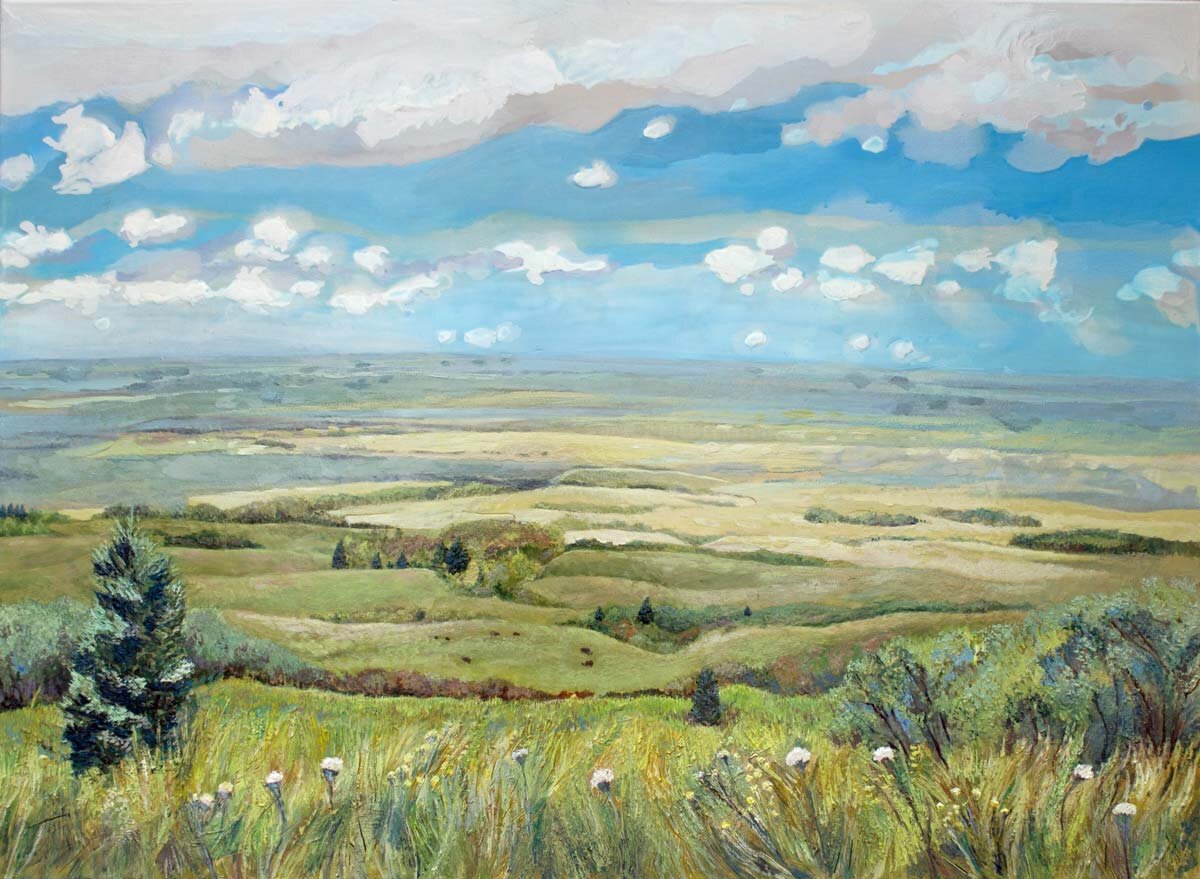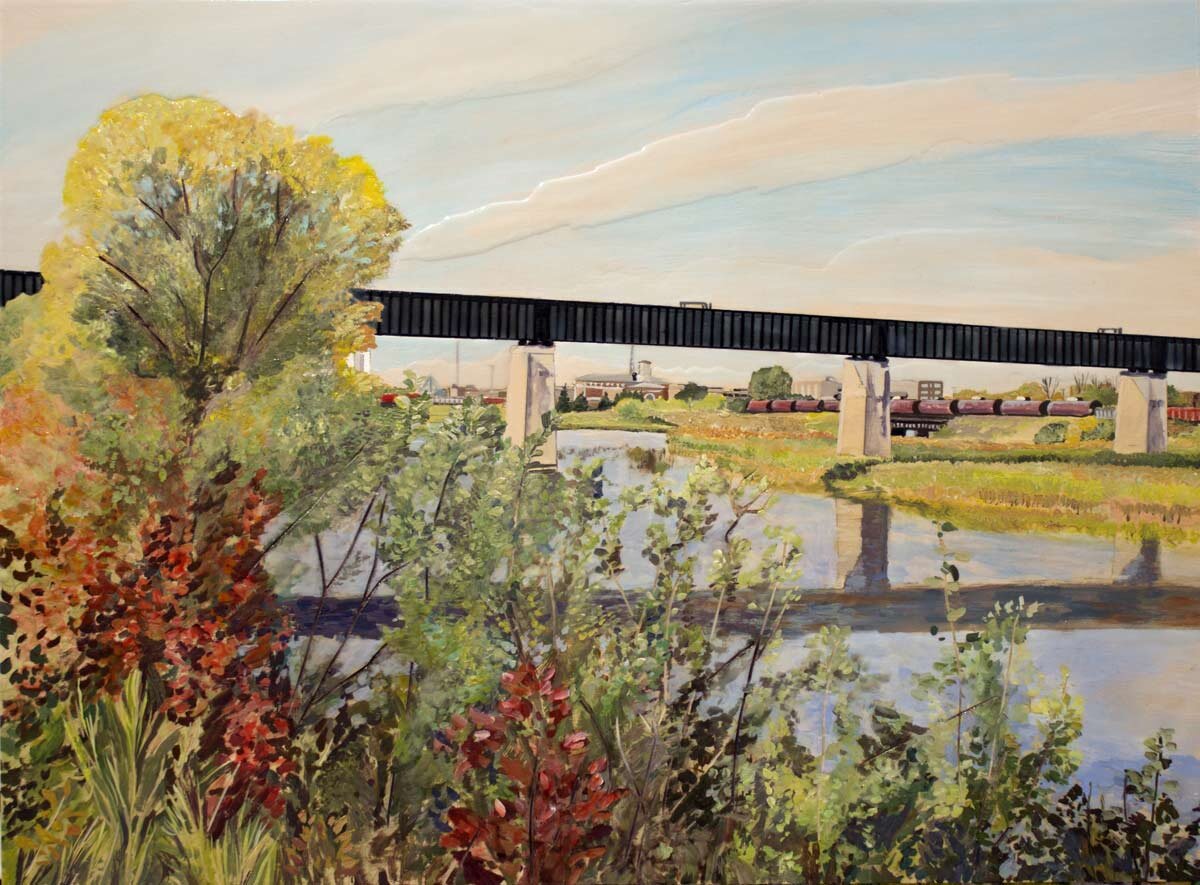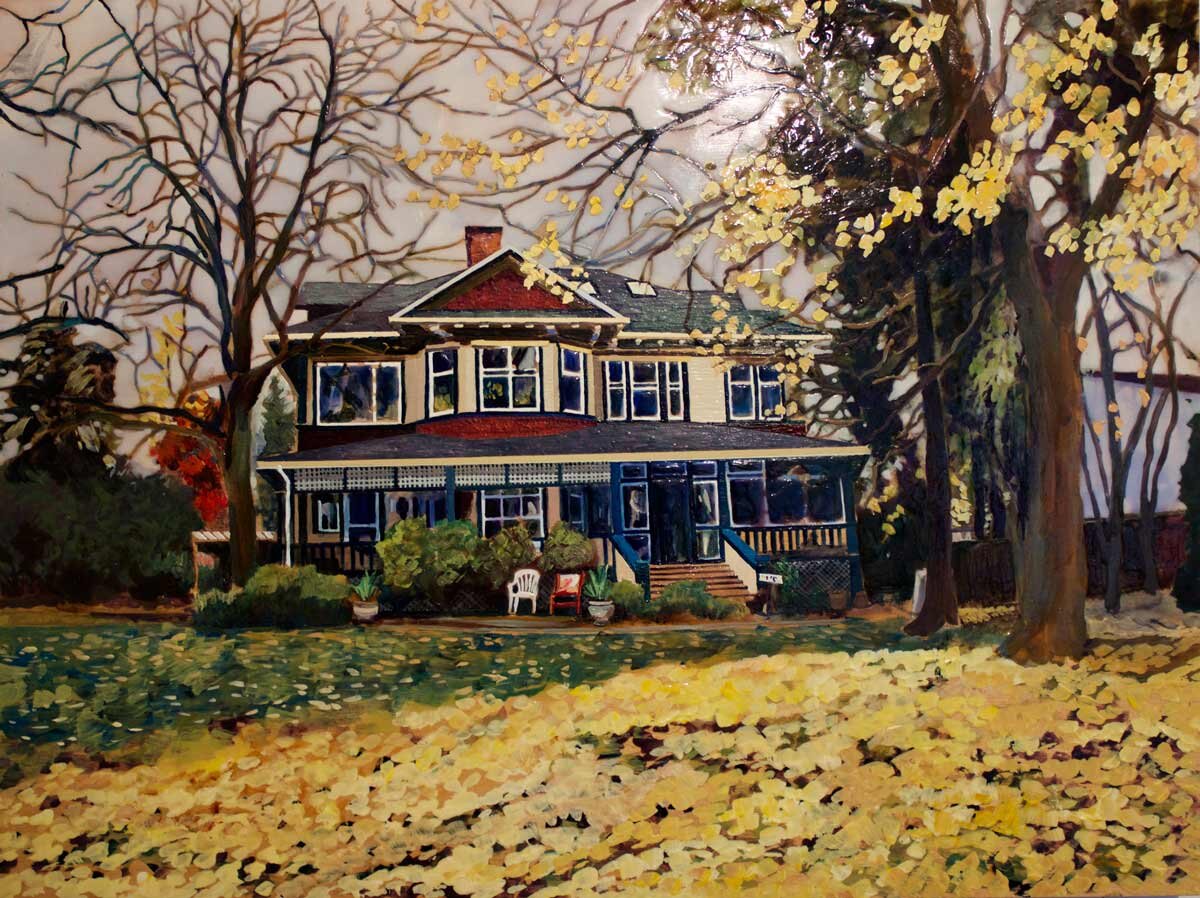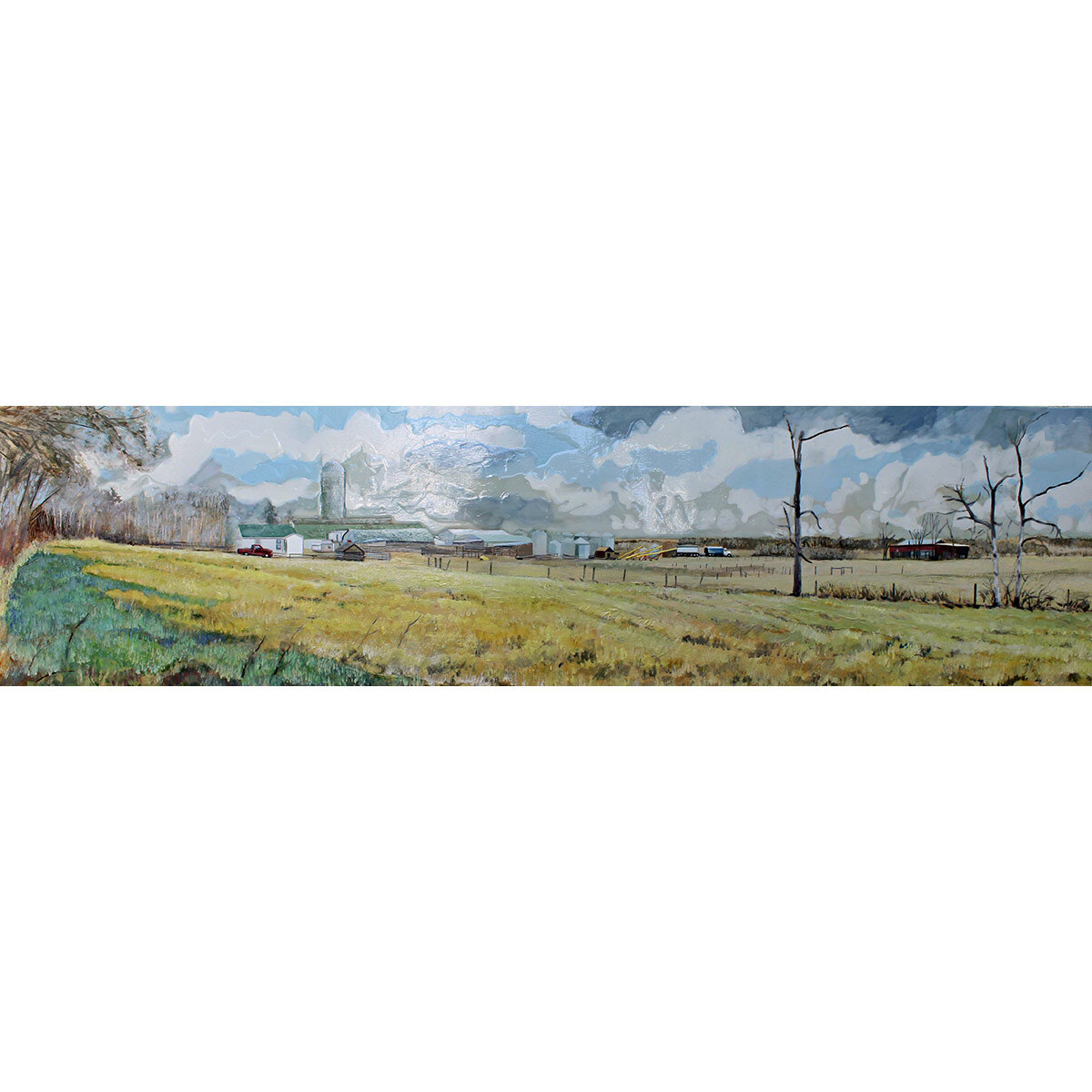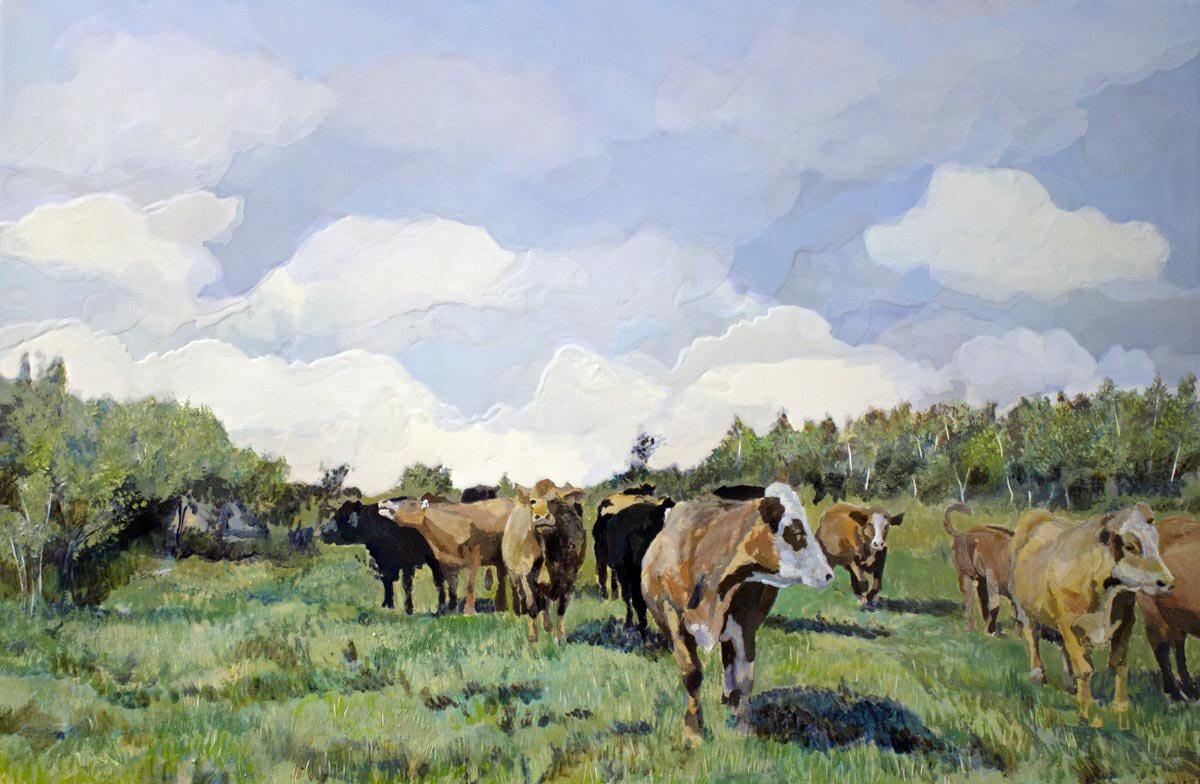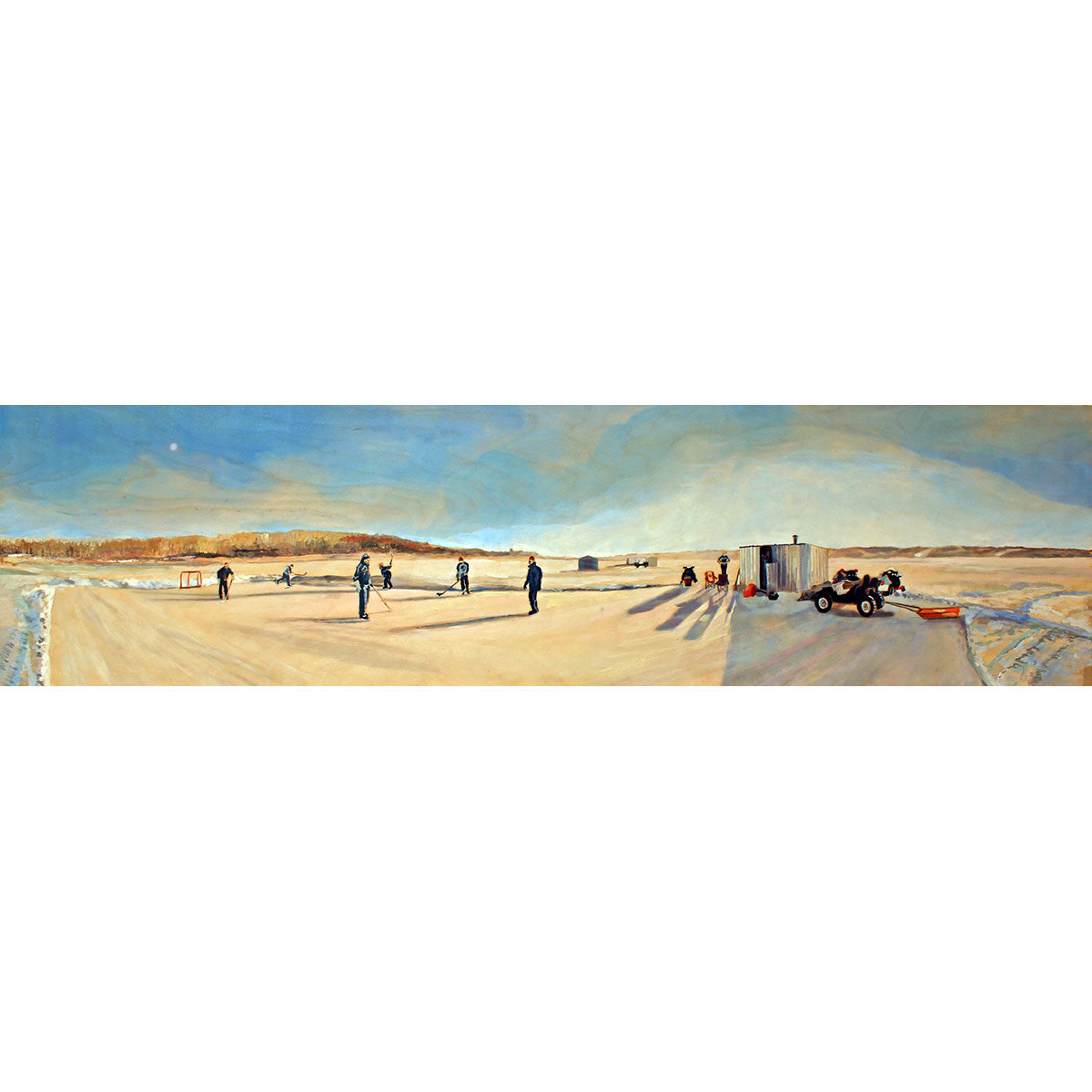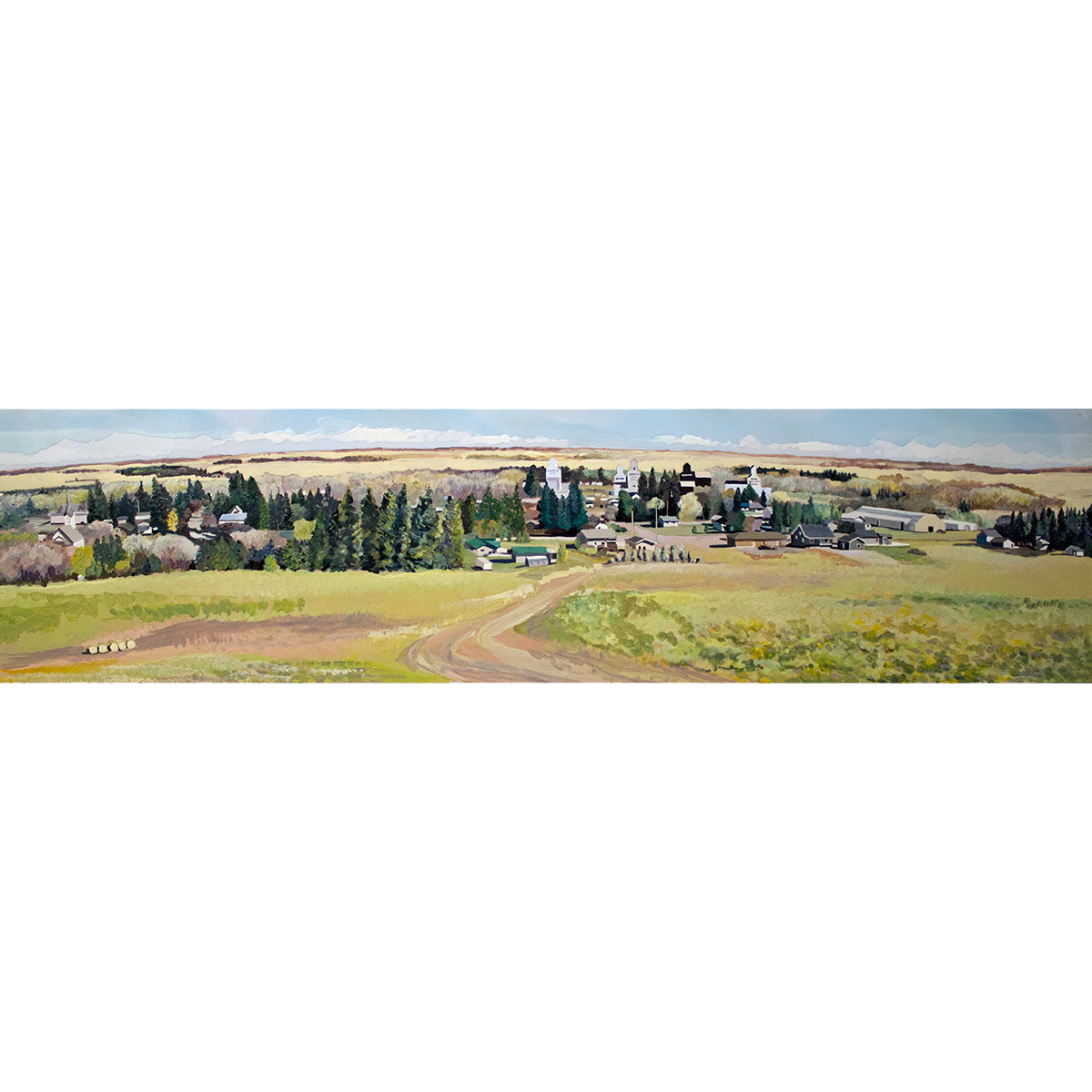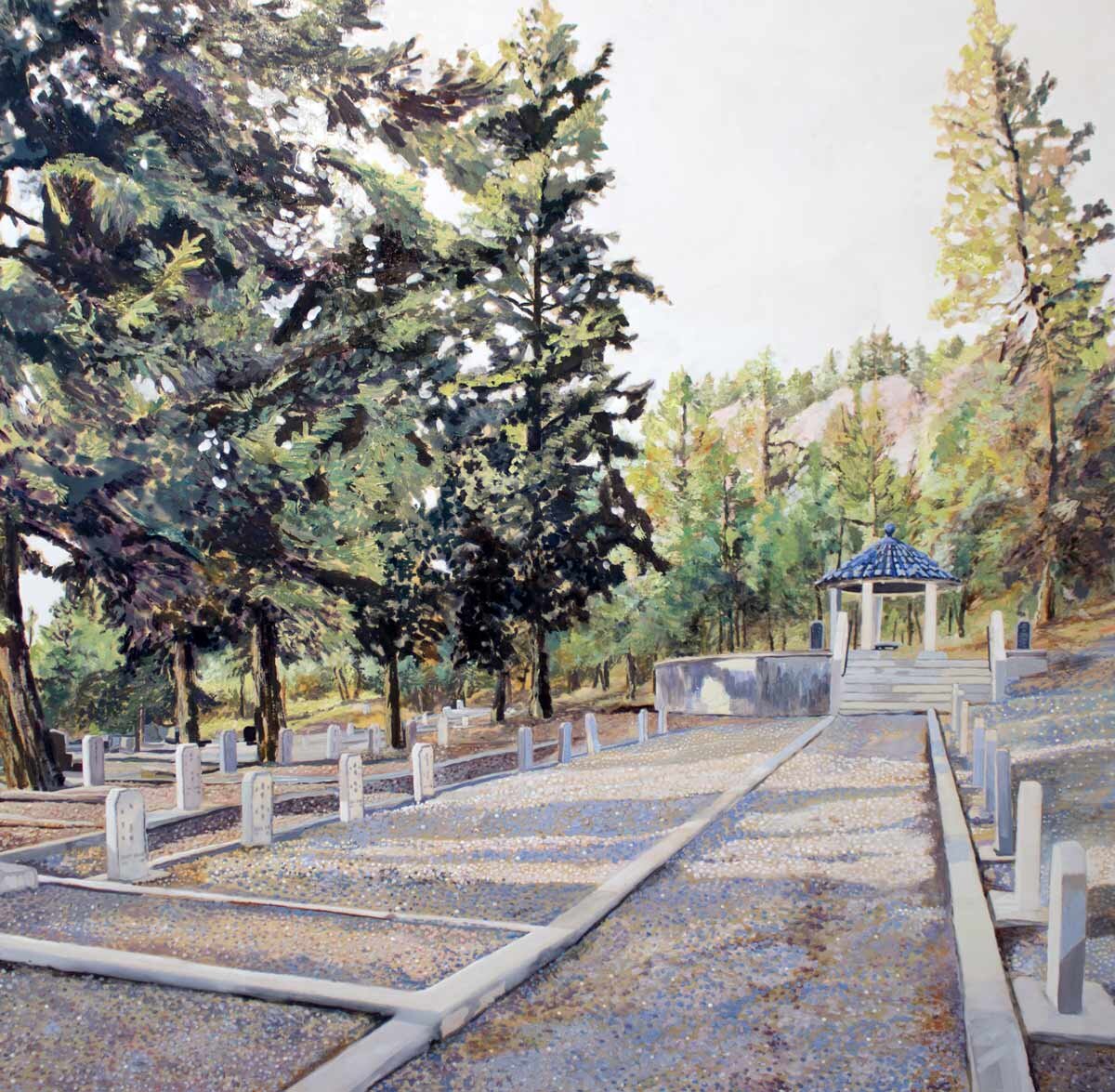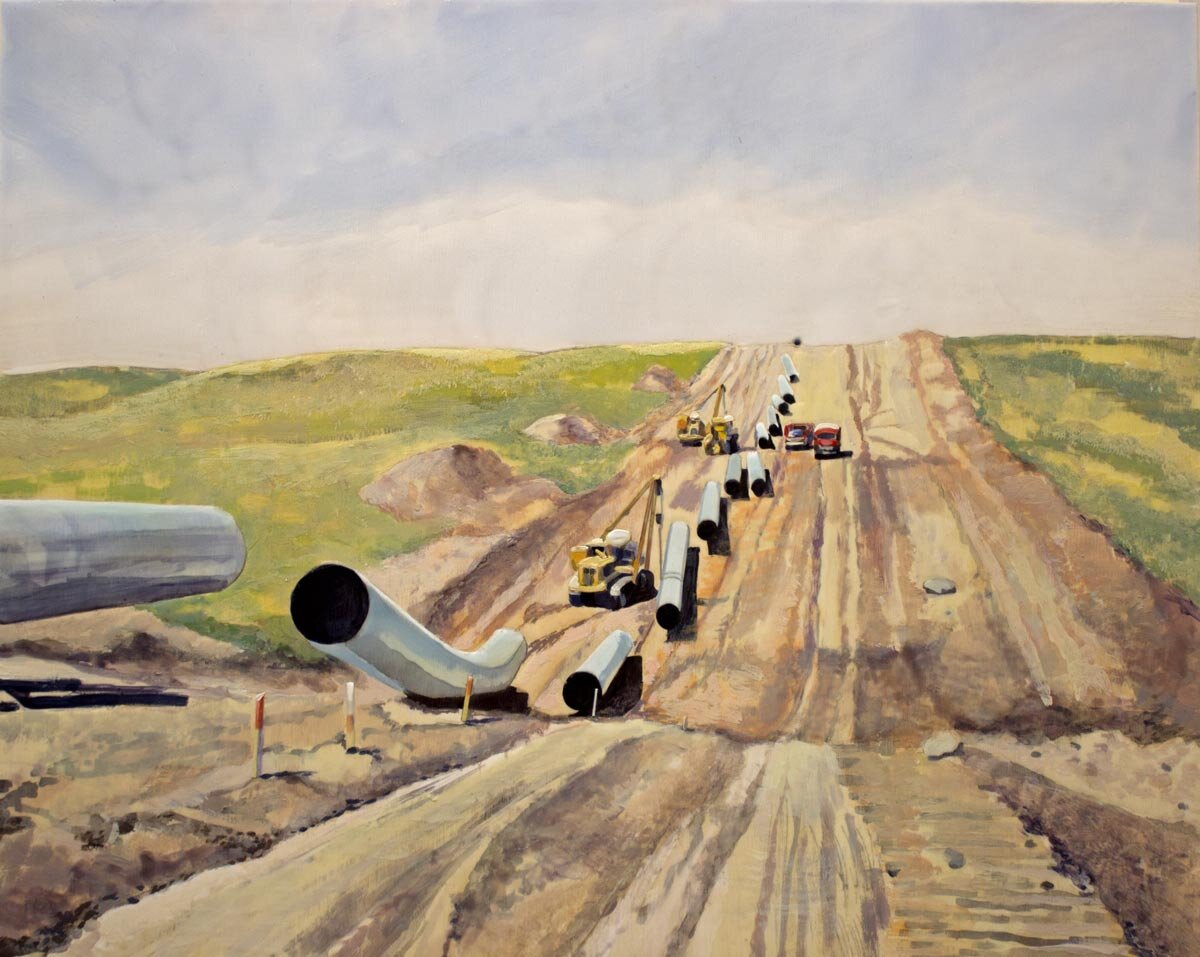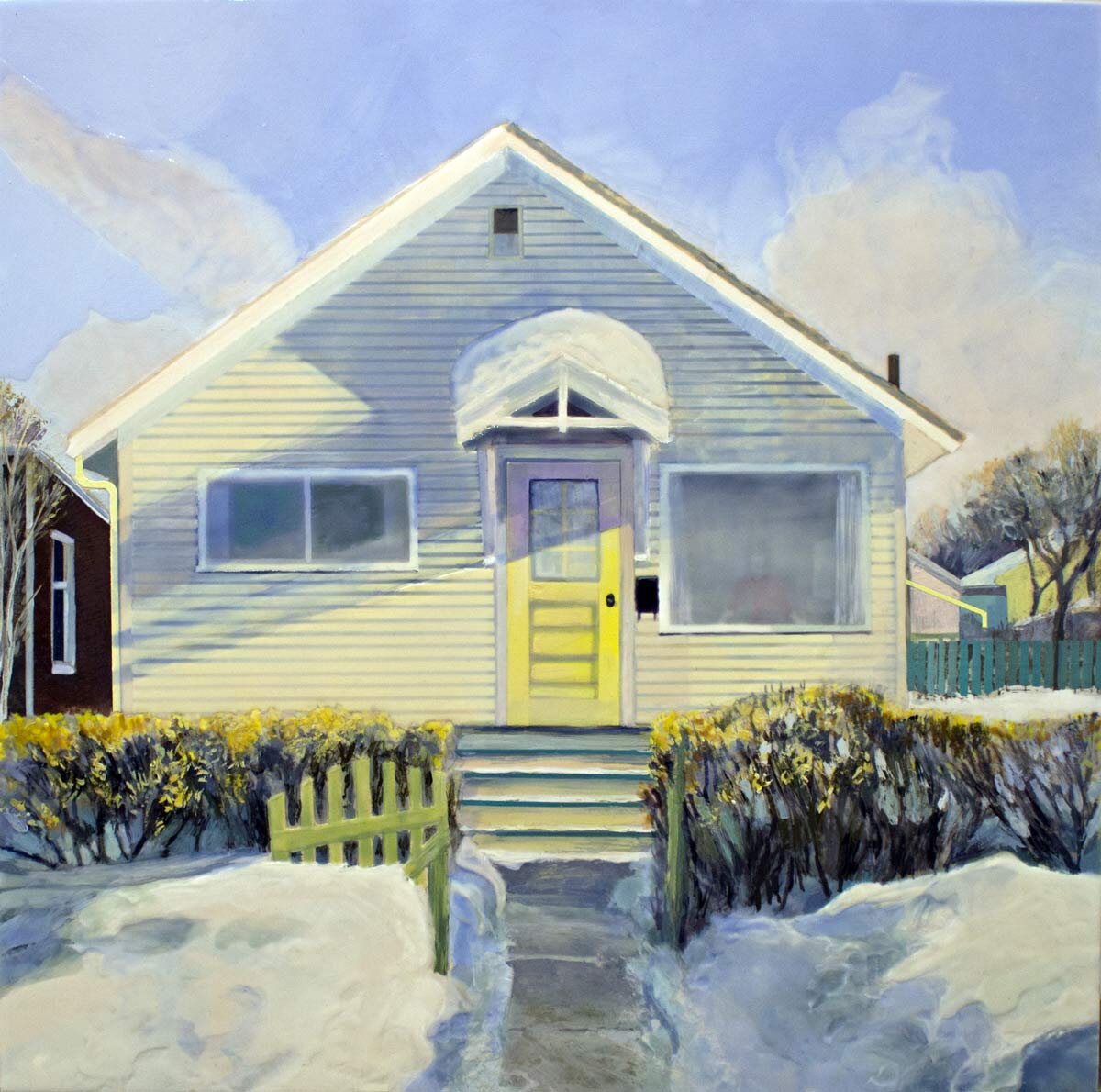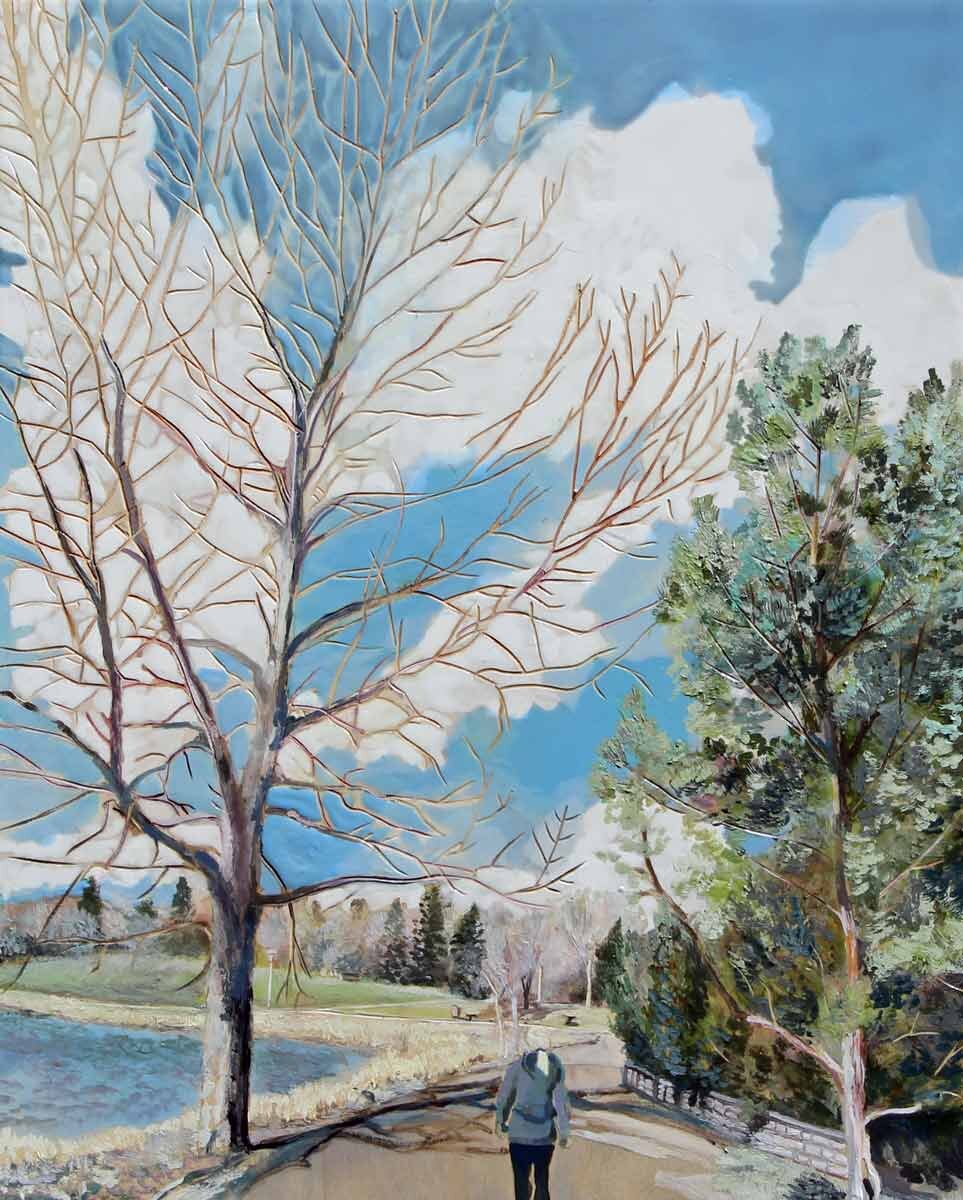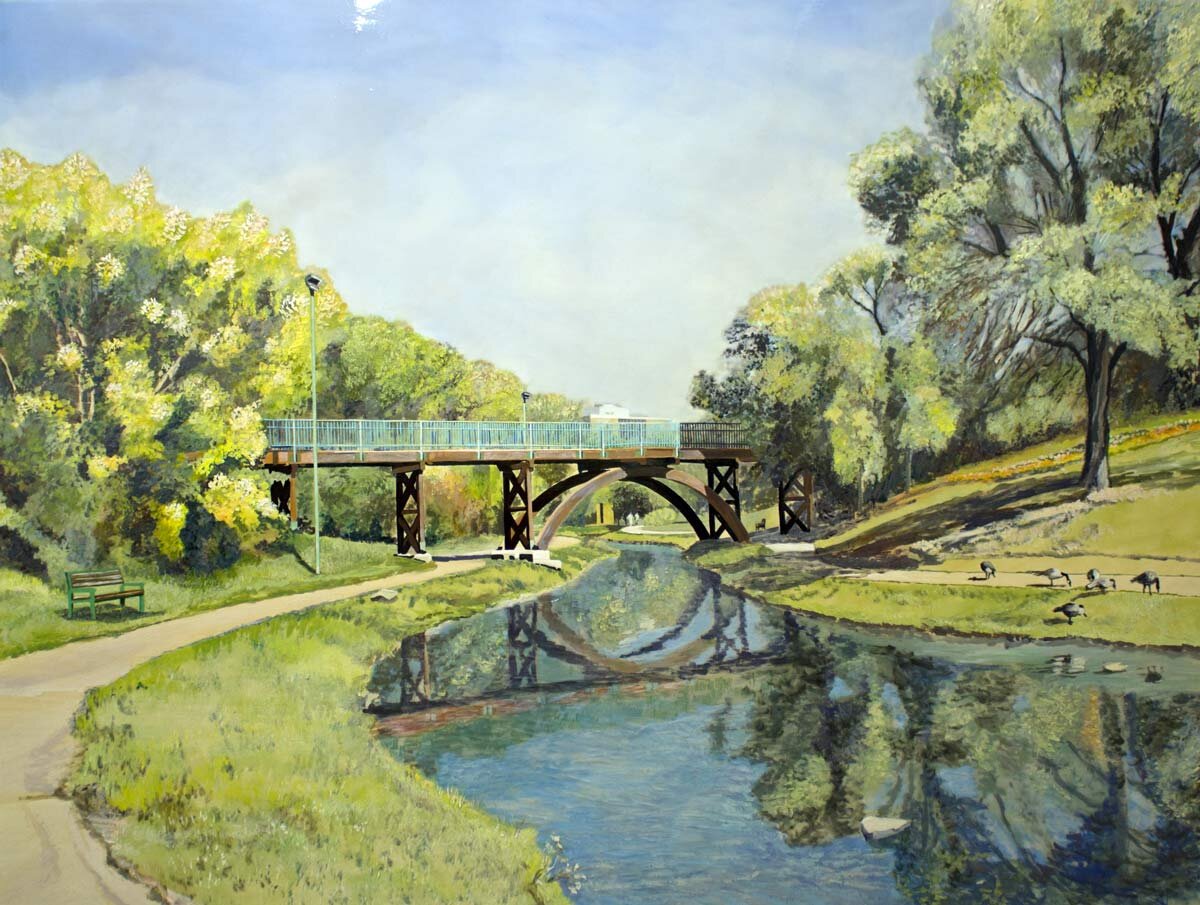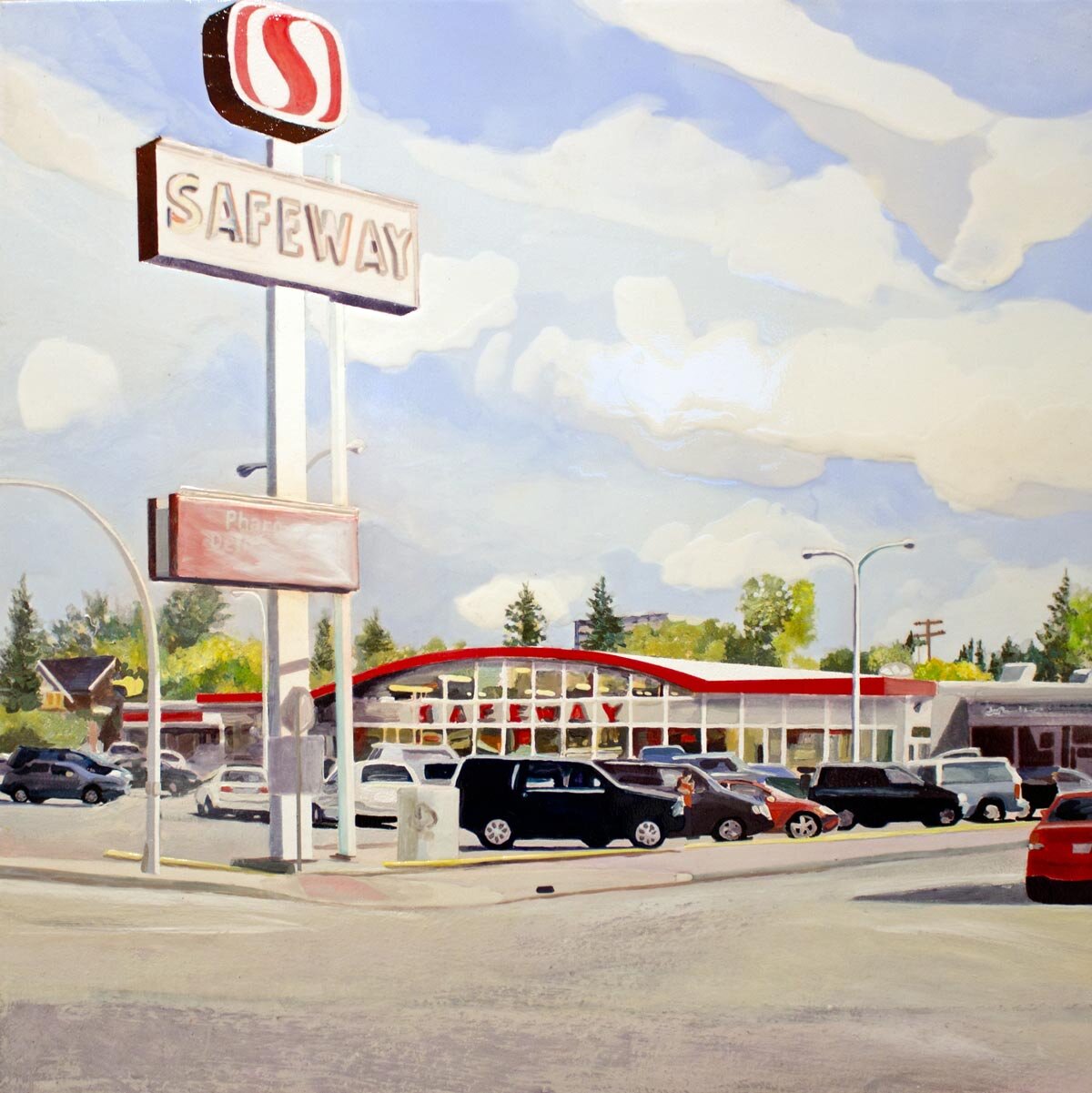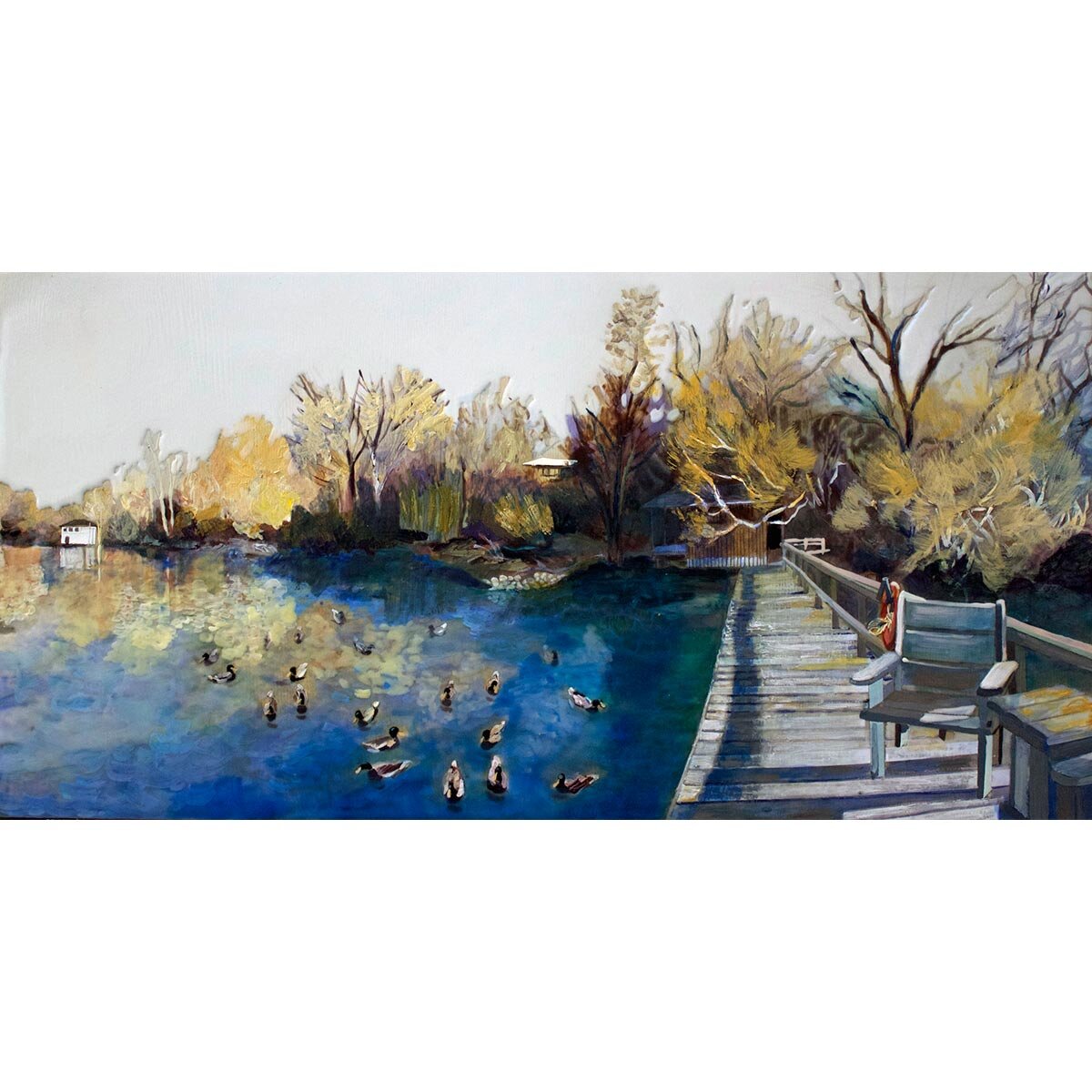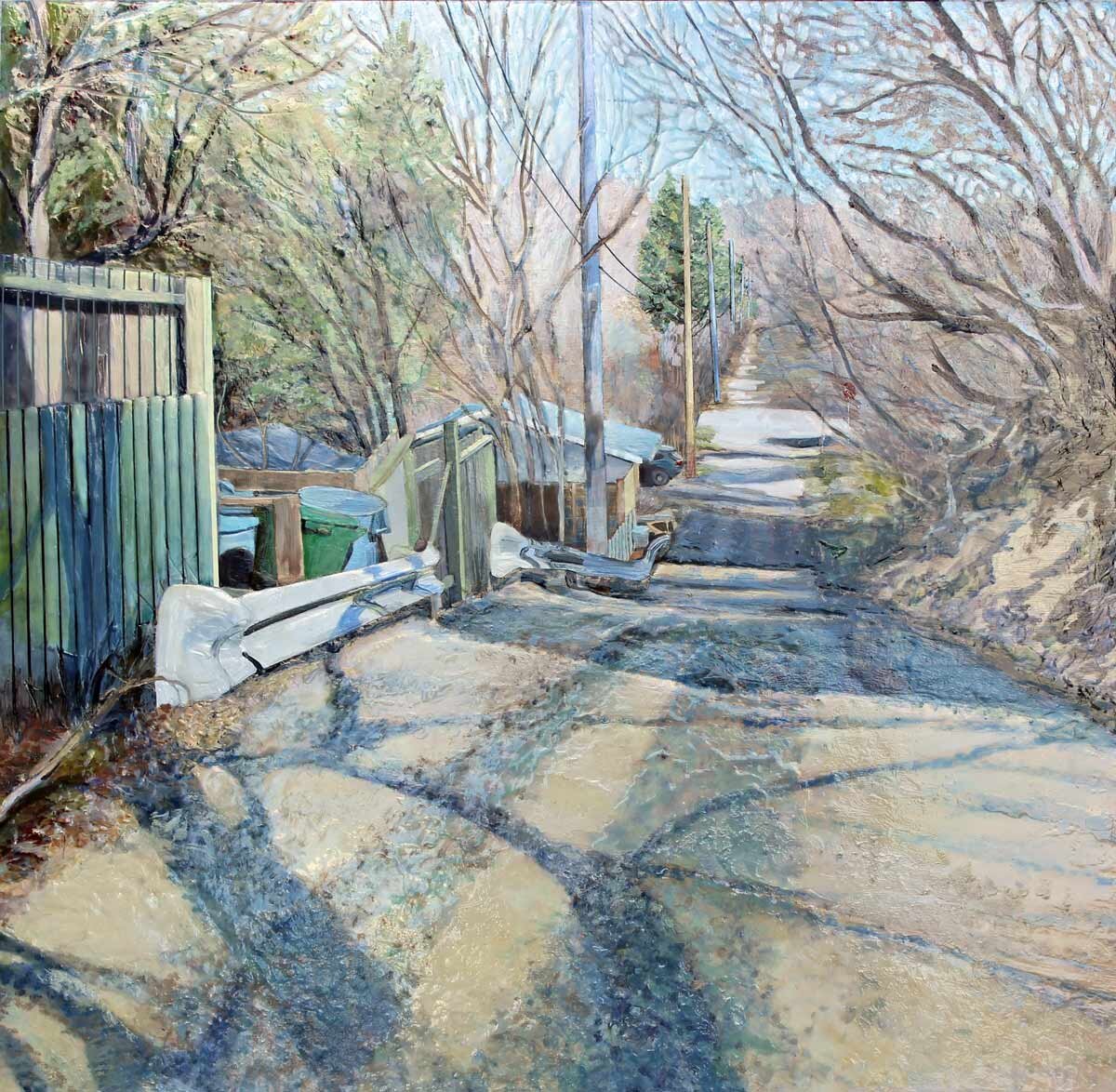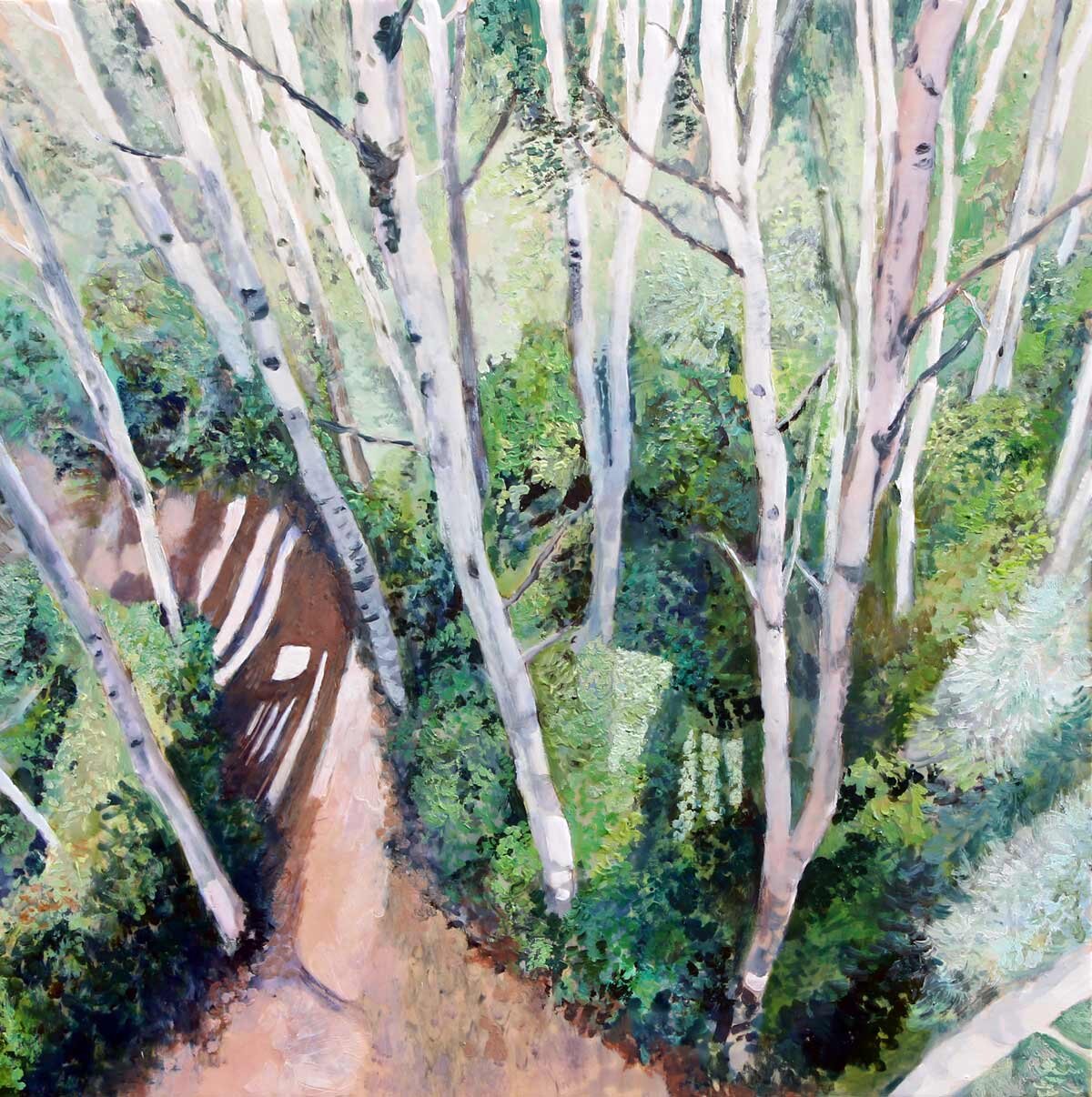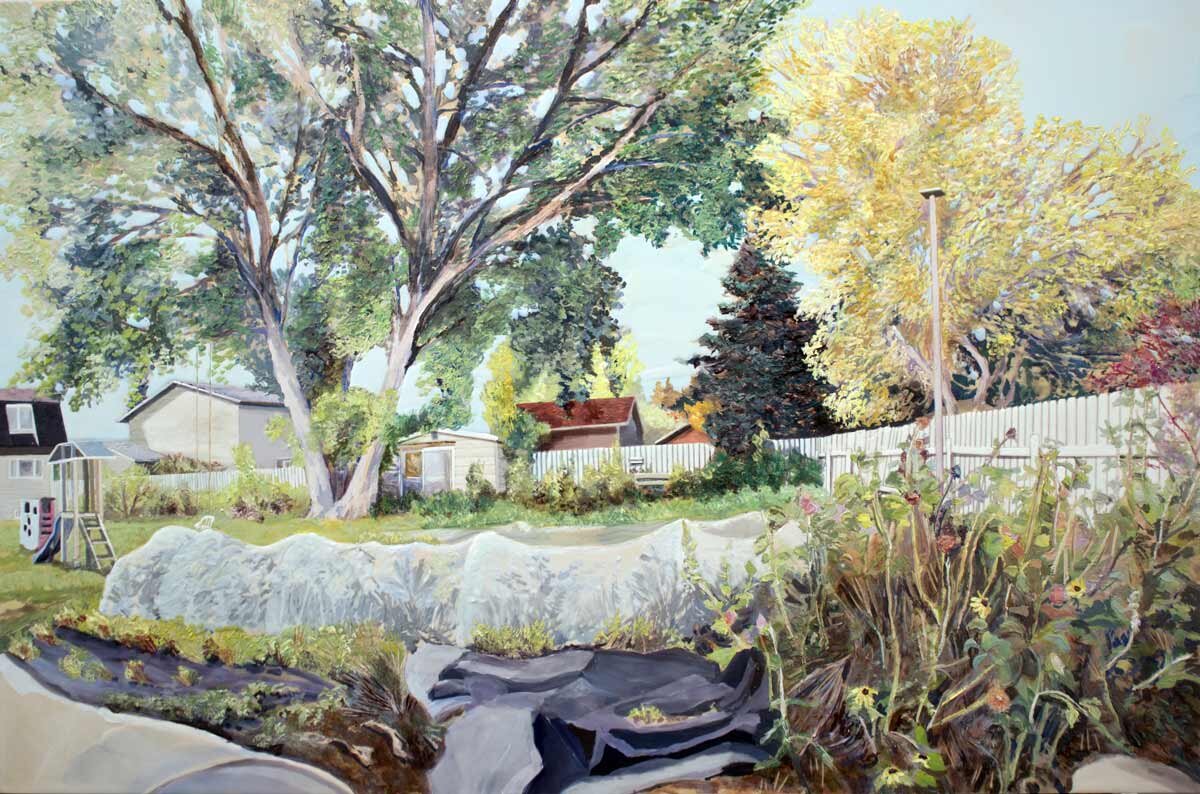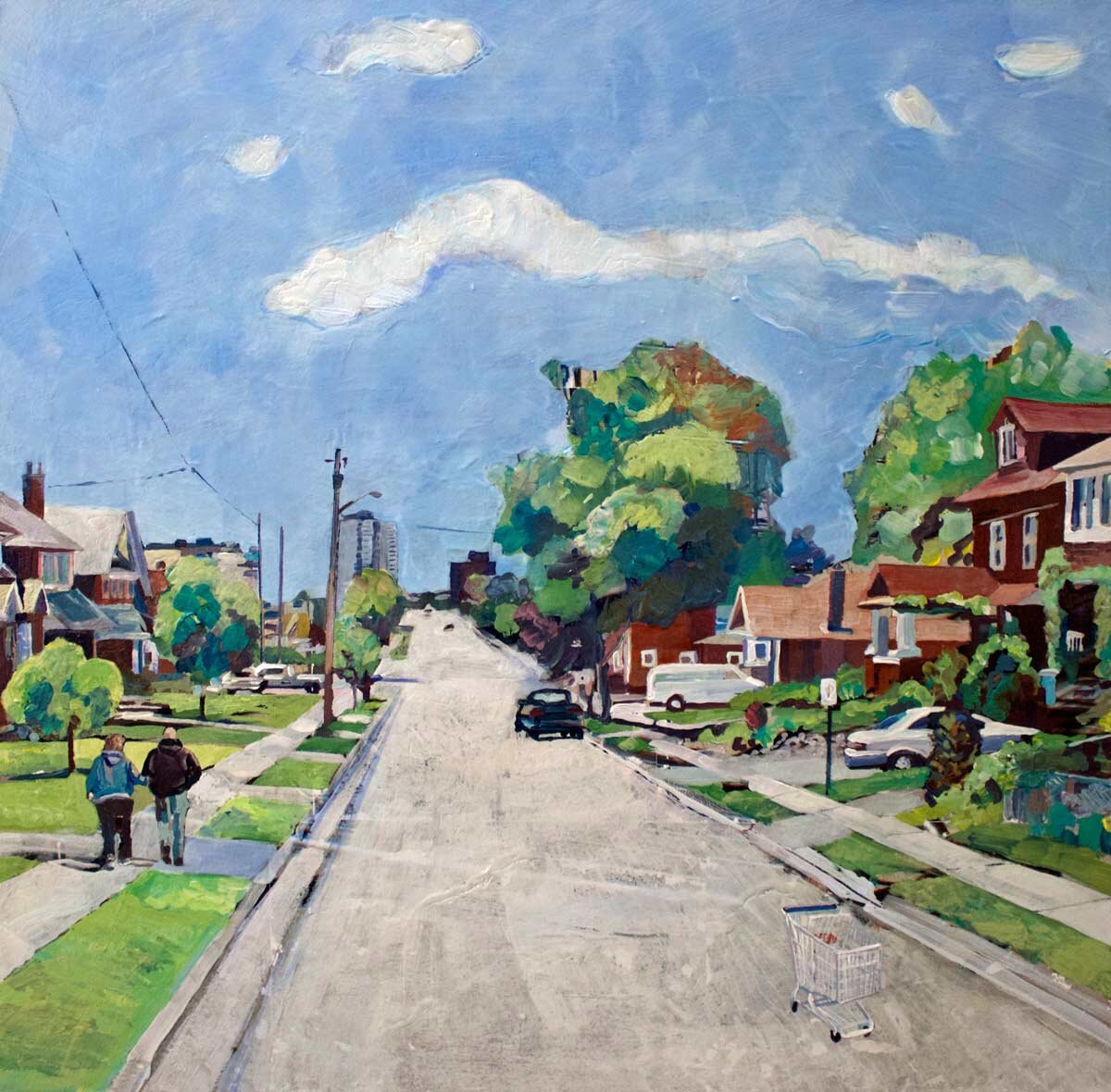‘Quiet Stories from Canadian Places’ was a roughly 10-year project (2008-2018) that involved collecting everyday stories and creating painting of places in response. The work involved community engagement, audio recording anecdotal interviews, and filtering my perception of geographical spaces through other people’s life experience. I used multiple types of technology to document place (including drone shots, GoPros, HD video and high quality still shots). I then manipulated this imagery and translated it into paintings.
Project activities included setting up a ‘Story Collection’ office from an inner-city store front in Oshawa, Ontario and riding along on combines in rural Manitoba. I viewed the exhibition as an installation, a large audio-visual collage. This approach mimicked contemporary museum practice, sites like the Canadian War Museum, where Canada’s War Art collection is displayed along-side historical analysis, artifacts and first-person accounts. I wanted people to experience how I felt as I collected stories from a series of smaller, yet oddly diverse communities.
I didn’t seek out specific demographics or large centers. The project focused on smaller communities, often in a state of transition. A small shrinking town in the middle of the central Manitoba, a community of 200 people grappling with the impact of the shifting nature of the agriculture business on the prairies. A GTR community facing a changing auto industry struggling to rebuild itself as an educational centre while battling a major inner city drug problem. An Okanagan city just starting to experience the effects of transitioning from fruit growing and ranching to a resort community for often absent multi-millionaires.
I talked with people from the age of 5 to 92, with diverse demographic and cultural backgrounds. I heard triumphant immigrant stories and bitter tales of unfulfilled expectations. I heard profound stories of identity reclaimed by first nations and Metis people. Aspects of sexism, poverty, displacement and diverse family life were illuminated through the simple stories told by the project participants. Students from an alternative school in southern Saskatchewan talked about their struggles with drugs, domestic battery and coping with being transgendered. These stories were often interwoven with a profound love of community and the natural environment. People also spoke about local, and frequently mundane, landmarks as a backdrop to their stories.
This is the subject matter that I weaved together into my own commentary on how we construct institutional history.
The participating communities included Regina SK, Oshawa Ontario, Inglis Manitoba, Vernon BC, Swift Current SK, Strathcona County Alberta, Moose Jaw SK and Kelowna, BC.
I have included selected paintings from the different regions in the following slideshow. Scroll down to listen to audio clips and view some video content about the project.
Artwork Slideshow (21 Images)
